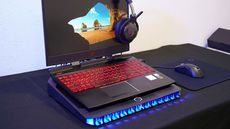Update 30/1/2023: An all new set of devices will put you in a good position for succeeding in 2023.
The 2023 school year is just kicking in and while many will have a laptop that can hang in there till next year, we’ve collated a list of the most affordable and powerful offerings in our Best Students Laptops guide for anyone that really needs to update their device.
Take the stress and strain out of choosing a great system for your schooling and university needs with T3's guide to the best laptops for students, which has a 2023 pick for just about every need and budget.
The good news is that retailers are keen to shift laptops to students, and will usually offer a host of tempting deals and discounts to get you to part with your cash, so keep your eyes peeled for the best student discounts on laptops while you shop – you just might end up spending less than you budgeted for.
So whether you're heading off to university, picking up your studies at home, or anything in between, our guide is here to help you find the overall best student laptop and narrow down a device that's perfect for you – one that has the features you need at a price that suits.
We hope our student laptop guide proves invaluable for anyone out there shopping for a system that's capable, decent value, and a boon to your productivity.
Be sure to keep checking back regularly, as we'll be constantly updating this list with newer models and updated information, and we'll also include some clutch buying advice to help you narrow down the ideal learning tool.
What is the best student laptop?
Why you can trust T3
Apple's MacBook Air is always a popular choice amongst students and the company's 2020 released M1 processor is still a super powerful and extremely efficient processor that does the job of keeping up with today’s premium laptop. Anyone buying a new M2 Air will be paying a bit of a premium for a whole raft of cosmetic upgrades that your average student just doesn’t need. So if you want a single recommendation, the MacBook Air (M1, 2020) is still our pick for 2023.
If you need a powerful Windows based OS then Acer’s Nitro 5 Black 15.6” gaming laptop is a standout value offering with a 12th gen CPU and a discrete graphics card. This device will be great for any demanding tasks your university or school requires you to do and it’s even good for firing up a game in your down time.
If your budget is a little tight to include these high-end student offerings then Lenovo's Ideapad Duet Chromebook is a fully kitted out 2-in-1 that comes in at under $600. Ultra portable and powerful enough to run web browsers and office applications with ease, this is an awesome device for younger students or those studying on a shoestring.
For more information about the best student laptops in 2023, then read on, but before we get to the main list, let's cover how to choose the best student laptop for you.
How to choose the best student laptop for you
Today's computers need to be able to do much more than the primitive number-crunchers of old. They need to support a huge range of software, given that several courses have special requirements, as well as the standard office packages.
When it comes to software, Microsoft's Office 365 suite is often made available to students by the academic institution they're attending and, if not, the Google Docs suite is free for everyone and easy to use for with a Gmail account. If you are partial to Google's online offering Google's Chromebooks are a great lightweight tool for students that can be cheaper than full Windows 11 systems.
Many students will need their laptops to be able to run HD video lectures without juddering of course, while a set of good speakers always comes in handy when the university day is done. These machines have to be affordable too, given the increased cost of schooling all round the world.
Integrated webcams are important as well, for web lectures and broadcast media-related courses especially in our increasingly online context, but these are now included as standard on every laptop. You'd be hard pushed to find a model without one.
Assuming that a student's main workload is based around the web and document processing, this roundup also allows for the odd use of processor-heavy professional applications on some of the more premium systems.
If you have lots of big data-sets to crunch or your studies require you to to work with graphically intensive software, you might want to check out our best ultrabook or best gaming laptops roundups for a slightly more powerful PC.
Given all that, these are our pick of the best student laptops currently available, ranging from humble typing machines to top-of-the-line Ultrabooks capable of both work and play.
The best student laptops you can buy today
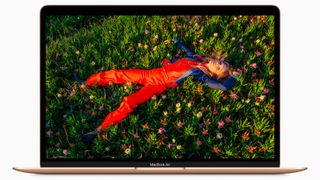
Apple's M1 chip still competes with some of the best Ultrabook processors out there, which means the MacBook Air offers unbeatable value.
Of all the M1 devices Apple released in 2020, the MacBook Air is the one that benefits most from the M1 Apple-built processor. This device is still powerful enough to keep up with many 12th gen Ultrabook chips which means it’s great value for a $1600 passively-cooled Ultrabook. It’s also still the record holder for the longest battery life laptop we have on file. At 19 hours and 6 minutes in 1080p movie playback it’s more than double the average current ‘long-lasting’ Ultrabook lifespan here.
If you can afford to drop a couple of hundred extra one of the newer MacBook Air or Pro units then you'll get a nicer keyboard with a handy Touchbar, better quality speakers and more robust cooling architecture, but other than that the MacBook Air offers an almost identical feature set, for less.
Starting at $1,599 the MacBook Air (M1,2020) scores a 400-nit 2560 by 1600 pixel Retina display with full DCI-P3 HDR colour reproduction, capable of professional-level cinematic colour grading. Because it's also got the same M1 processor as some older MacBook Pros it can also handle intensive workloads like rendering and transcoding.
System memory on the new MacBook Airs is integrated into the M1 chip, which means most will be able to get away with just the entry 8GB of RAM. We found 8GB of Apple's Unified Memory was enough to get 86.6 fps on games like Total War Saga: Troy using Low 1680x1050 resolution settings. This system also outperformed the XPS 13 (9310) by 40% in Geekbench 5 multi-threaded CPU tests.
If that wasn't enough the MacBook Air also has a fingerprint reader, a dedicated AI processor, access to iOS and MacOS apps and a new web camera to round out a pretty amazing package.
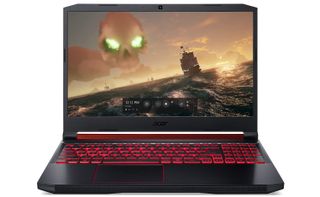
Acer's entry Nitro 5 Gaming laptop is a great portable workstation for students.
The Nitro 5 Black is a range offering both AMD and Intel powered devices all the way up to $4K gaming laptops, but the entry level units with a Nvidia RTX 3050, 3050 Ti or 3060 GPU are great value as a powerful alternative to student laptops.
With an RRP of just $1,099 the Acer Nitro 5 Black offers a 12th Generation Intel core i5-12500H CPU, 16GB of RAM, a Nvidia GeForce RTX 3050 GPU and a 512GB PCIe SSD. That’s a pretty amazing package at that price, enabling you to get playable 30fps+ framerates on demanding games at 1080p high settings and much faster framerates on older games or when dialling down the graphical settings. This is complemented by the fast 144Hz FullHD display that’ll make fast-paced games look great and feel responsive.
Even if you don’t want this laptop for gaming purposes, the additional power of a dedicated GPU will allow you to perform demanding creative tasks that simply won’t be possible on a Chromebook or lower specced Windows device.
If that wasn’t enough the 512GB SSD is fast and offers a much larger capacity than what most student devices will. Connectivity is also diverse with an Ethernet port, multiple USB Type-A sockets, USB-C, an HDMI and a 3.5mm headphone jack.
If you can handle carrying the extra weight and don’t mind having a limited battery lifespan then this is a solid student laptop option.

The Ideapad Duet Chromebook is the best deal for students on a tight budget.
We were pretty blown away by Lenovo’s Ideapad Duet Chromebook. If you put it up next to a Microsoft Surface Go 2, you’d probably notice that the Chromebook’s keyboard was fractionally harder to type on, the back panel stand made it a little heavier and they run different operating systems, but that’s not a lot when you consider that the Surface Go 2 starts at $629 (or $829 with keyboard) and the Ideapad Duet Chromebook comes with keypad and stand case for $599.
While we definitely prefer the hardware from Microsoft, Chrome OS is a much richer operating system than Windows 10S to use with a lightweight 2-in-1, especially if you already use Gmail or any of the other G Suite apps. That said, the 10.1-inch 1920 x 1200 pixel display looks vibrant and offers a 400nit peak brightness and other than the overly small right hand side keys the keyboard is easy enough to type on and comes with a nicely sized, smooth-to-touch trackpad.
If you’re a tab hoarder, you’ll probably hit the upper limits of the device’s MediaTek P60T 8-core processor and the 4GB of RAM pretty quickly, but anyone who’s happy to keep things to just a handful of tabs on a few desktops shouldn’t really have any issues. Battery life was pretty good too, lasting 5 hours and 31 minutes in gaming benchmarks and 7hours and 45 minutes in 1080p movie playback.
There are a couple of minor setbacks like the single USB Type-C port (it comes with a c-to-3.5mm headphone adapter) and a slow ~100MB/s flash memory at 128GB without the option for microSD card expansion, but at least Google offers 100GB of online storage to new users, which alleviates some of the pain here.
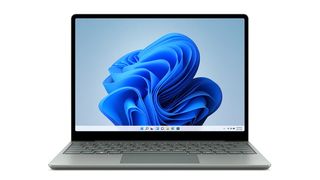
The original Surface Laptop Go was an impressive offering that managed to make a super affordable laptop feel powerful and had a nice enough look and feel to seem like a premium Ultrabook. Like most of the Surface updates, the Surface Laptop Go 2 sticks pretty close to its predecessor by using the same 12.4-inch PixelSense display. It also uses a similar compact and ultralight profile and maintains all the higher-end networking and security features that elevates it above the other budget student laptops here.
While a lot of the best features remain the same, there’s also few major improvements to be found, including: the 11th Gen Intel processor that brings performance forward a generation. All Surface Laptop Go 2 units use the same Intel i5-1135G7 CPU and can be paired with either four or 8GB of RAM for $1,099 or $1,199 respectively. These devices come with a 128GB PCIe SSD, which you can increase on the 8GB RAM model to 256GB for a total outlay of $1,299. There’s no option for small eMMC storage this year, which means the entry model is more expensive, but it actually brings the cost of the middle offering down by $50 and you get a Gen 3 PCIe SSD with 3,000MB/s read and 1,600MB/s write speeds, which is much faster than the original Surface Laptop Go.
This new processor offers between 15 and 30 percent performance improvement over the original Surface Laptop Go on general work tasks and is a more efficient chip overall. This means you’ll get an extra two hours of battery life from it when using general office tasks like those in the PCMark 10 Home Battery benchmark. With a total lifespan of 8 hours and 52 minutes you can safely leave your charger at home for a full work day.
The updated 11th Gen chip also comes with Intel’s Iris Xe Graphics which offers over 2.5 times the GPU performance and means you could do a bit of light gaming on this device using low graphics settings at sub 1080p resolution. The device we tested didn’t get above 90 degrees through our benchmark tests, which is impressive when you consider we didn’t hear the fans at all through the process.
Microsoft have done a bit of work improving the overall feel of the keyboard and trackpad to make it hard to distinguish form more expensive Surface units and the dual studio microphones and HD camera have had some attention in this update too. It doesn’t have the infrared camera for Windows Hello facial recognition, but there is a fingerprint reader on both 8GB units that makes signing in still really fast.
Audio quality is really good, especially for a budget laptop, and the touchscreen 148 PPI display looks great for something that isn’t quite FullHD. The Surface Laptop Go 2 also comes with full Windows 11 Home, by default, which marks the first time a Go device has entirely ditched the Windows S confined OS. A set of USB-C, USB-A, 3.5mm audio and Surface Connect Port interface options round out a pretty amazing offering for something a little over $1K.
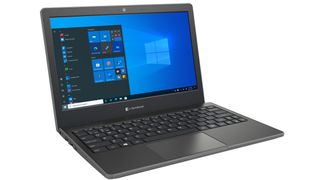
Dynabook (formerly Toshiba) has a new student focused laptop
Dynabook, the Japanese brand of laptops that was spun out of Toshiba in 2018, is continuing to expand its Australian range of devices with the new student focused E10-S. This new ultra-budget laptop is compact, durable and affordable… everything you’d be looking for in a student laptop for young kids to learn on.
Web browsing, document editing and very light browser based games are about all this device can handle, but it’s enough to achieve all you’d need to in most young learning environments.
The 11.5-inch screen is likely going to seem pretty pixelated and faded to anyone that has bought a laptop in the last five years, and unfortunately it isn’t great even up against competition like Kogan’s much cheaper C500. While the 1,366 by 768 pixel display won’t make video or web pages look super vibrant, it is at least functional and the low 200 nit peak brightness helps with battery life.
The device comes with an HD webcam, positioned at the top of the screen, and there’s a dual microphone array and stereo sound, so you won't have to worry about it not being compatible for remote learning. The keyboard is actually surprisingly good too, offering nice key spacing and reasonable resistance and travel. The trackpad is soft and responsive, so while there's no touchscreen there should be no limitations interacting with the device.
You can get 11 hours and 16 minutes of work time or 12 hours and 20 minutes of 1080p movie playback. The onboard storage is about as slow as you can get at 140/116MB/s read and write speeds. This is around what you’d expect from a hard disk drive but it's on the slower end for entry level student laptops these days still.
There’s 802.11ac Wi-Fi which is going to be fine for any student’s needs but the E10-S also comes with a Gigabit Ethernet connection to allow you to hardwire in Wi-Fi dead zones. Two USB 3.0 Type-A connections, an HDMI connection, USB Type-C interface and MicroSD card reader all come included out of the box which is a very versatile selection of connection options.

The Surface Go 3 isn't too different to its predecessors, but it's still a decent student 2-in-1.
Now into its third iteration of the Surface Go tablet, the segment is starting to mature… which is an interesting aspect for a budget laptop range. Normally, you’d expect to find some concessions in an entry level device, but similar to other Surface products, the iterative process has ironed out a lot of the kinks and results in a refined device that offers an exceptional level of functionality.
Up front the Surface Go 3 uses the same 10.5-inch PixelSense display with a 3 by 2 1920x1080 pixel resolution touchscreen display as its predecessor. This screen has a 400 nit typical brightness with a 1:1500 contrast ratio and 10-point capacitive touch, so you don’t really need much more in terms of visual quality or usability than what’s already on offer.
It’s also got pretty much the same RAM options and while the Intel Pentium Gold 6500Y is technically a new processor released in 2021, it's built from the same components as the Intel Core m3-8100Y that were on the most expensive Surface Go 2s.
The Intel Pentium Gold 6500Y is a step forward from the more affordable options of the last generation in terms of CPU performance, adding somewhere between 20 percent and 40 percent to the processor scores. Unfortunately there’s also a serious drop in graphical performance with the GPU taking a hit of between 16 and 78 percent depending on the benchmark. This is a seriously disappointing development and means that even light gaming and GPU heavy tasks will be a challenge on this device. While the Surface Go 2 could get 42fps on Rocket League using ‘Performance’, HD settings the graphical performance drop in the Go 3 means this game is no longer playable, under any settings.
This means that the only upgrade on the Surface Go 3 is the inclusion of Windows 11 S Home, which is a nice visual upgrade to Windows 10, but it isn’t enough to feel like a real update.
The Surface Go 3 Type Cover is nice to type on for an ultra compact and there’s all the latest Wi-Fi and Bluetooth connectivity. The Surface Go 3 is still a great portable 2-in-1 offering, it just hasn’t changed much in the last few years as the competition in the budget portable offering has really heated up.

A great budget laptop for those that need Ultrabook performance at a lower price.
The Acer Aspire 5 comes with the option of either a 5000 series AMD or 11th Gen Intel CPU and 8 or 16GB of RAM locally and now that these aren’t the current generation they’re pretty affordable. We’ve seen them with a i7-1165G7 CPU, 8GB of RAM and a 256GB SSD for as little as $897.
The full-size processors mean that whatever device you opt for here it’ll be one of the more powerful devices offered in this roundup. The device is more than capable of powering through most tasks on the Windows 11 Home OS it's packaged with, with enough overhead to download a wide variety of applications for stuff like light photo editing and browser based and older-title gaming.
Battery life isn’t quite a full day, but it’ll get you most of the way when you forget your charger lasting around 6.5 hours. It’s not the most portable offering here, but its the biggest device in the top half of this list, so a little extra bulk is to be expected.
The Acer Aspire 5 has all the essentials of a work/ study laptop at a much more affordable price, and you can even nab some decent sales on them these days.
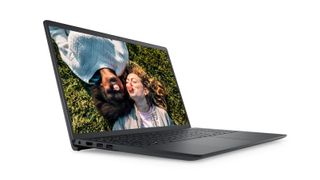
Dell's budget Ultrabook offers decent performance at fair price.
You can still get the Dell Inspiron 15 with an 11th generation Intel CPU and a 256GB SSD for around $900, for just $100 more you’ll get an Inspiron 15 with a 12th generation processor and a 512GB SSD. Needless to say we reckon the newer models are better value since you’ll get an extra year or more before they’ll be so underpowered you have to replace them.
The Inspiron 15 has a nice array of connectivity options and although its 250 nit FullHD 15.6-inch screen is a little dull, it’s enough to work on under normal indoor office lighting.
It’s not the slimmest or lightest Ultrabook, but it is still extremely portable and even when you opt for the higher specced i7 configuration the pricing is still super competitive.
You shouldn’t have any issues with the 54Wh battery and it’s got a good assortment of Wi-Fi 6 and other networking credentials. The speakers, microphones and webcam are all suitable for online meetings and media playback.
Lead image credit: Getty







